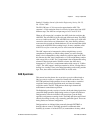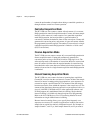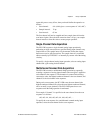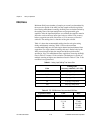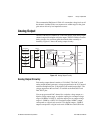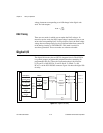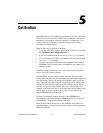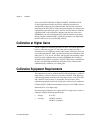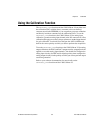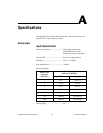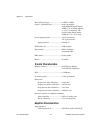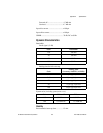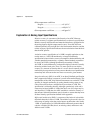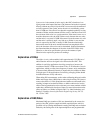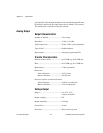
Chapter 5 Calibration
PCI-1200 User Manual 5-2 © National Instruments Corporation
If you use the PCI-1200 with NI-DAQ, LabVIEW, LabWindows/CVI,
or other application software, the factory calibration constants are
automatically loaded into the calibration DAC the first time a function
pertaining to the PCI-1200 is called, and again each time you change your
configuration (which includes gain). You can, instead, choose to load the
calibration DACs with calibration constants from the user areas in the
EEPROM or you can recalibrate the PCI-1200 and load these constants
directly into the calibration DACs. Calibration software is included with
the PCI-1200 as part of your NI-DAQ software.
Calibration at Higher Gains
The PCI-1200 has a maximum gain error of 0.8%. This means that if the
board is calibrated at a gain of 1 and if the gain is switched to 100, a
maximum error of 32 LSB may result in the reading. Therefore, when you
are recalibrating the PCI-1200, you should perform gain calibration at all
other gains (2, 5, 10, 20, 50, and 100), and store the corresponding values
in the user-gain calibration data area of the EEPROM, thus ensuring a
maximum error of 0.02% at all gains. The PCI-1200 is factory-calibrated at
all gains, and NI-DAQ automatically loads the correct values into the
calibration DACs whenever you switch gains.
Calibration Equipment Requirements
The equipment you use to calibrate the PCI-1200 should have a ±0.001%
rated accuracy, which is 10 times as accurate as the PCI-1200. However,
calibration equipment with only four times the accuracy as the PCI-1200
and a ±0.003% rated accuracy is acceptable. The inaccuracy of the
calibration equipment results only in gain error; offset error is unaffected.
Calibrate the PCI-1200 to a measurement accuracy of ±0.5 LSBs, which is
within ±0.012% of its input range.
For analog input calibration, use a precision DC voltage source, such as a
calibrator, with the following specifications.
• Voltage 0 to 10 V
• Accuracy ±0.001% standard
±0.003% acceptable



